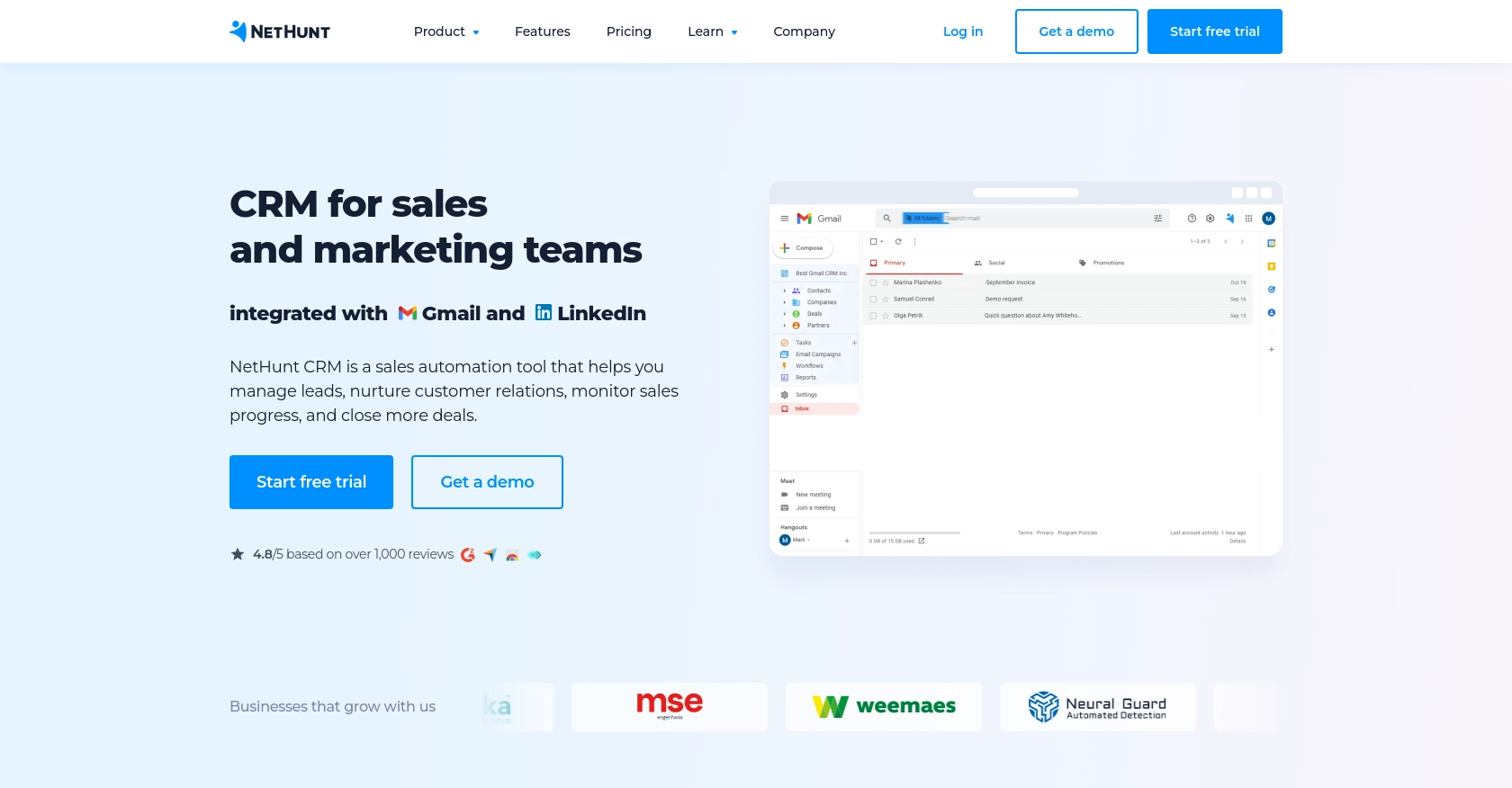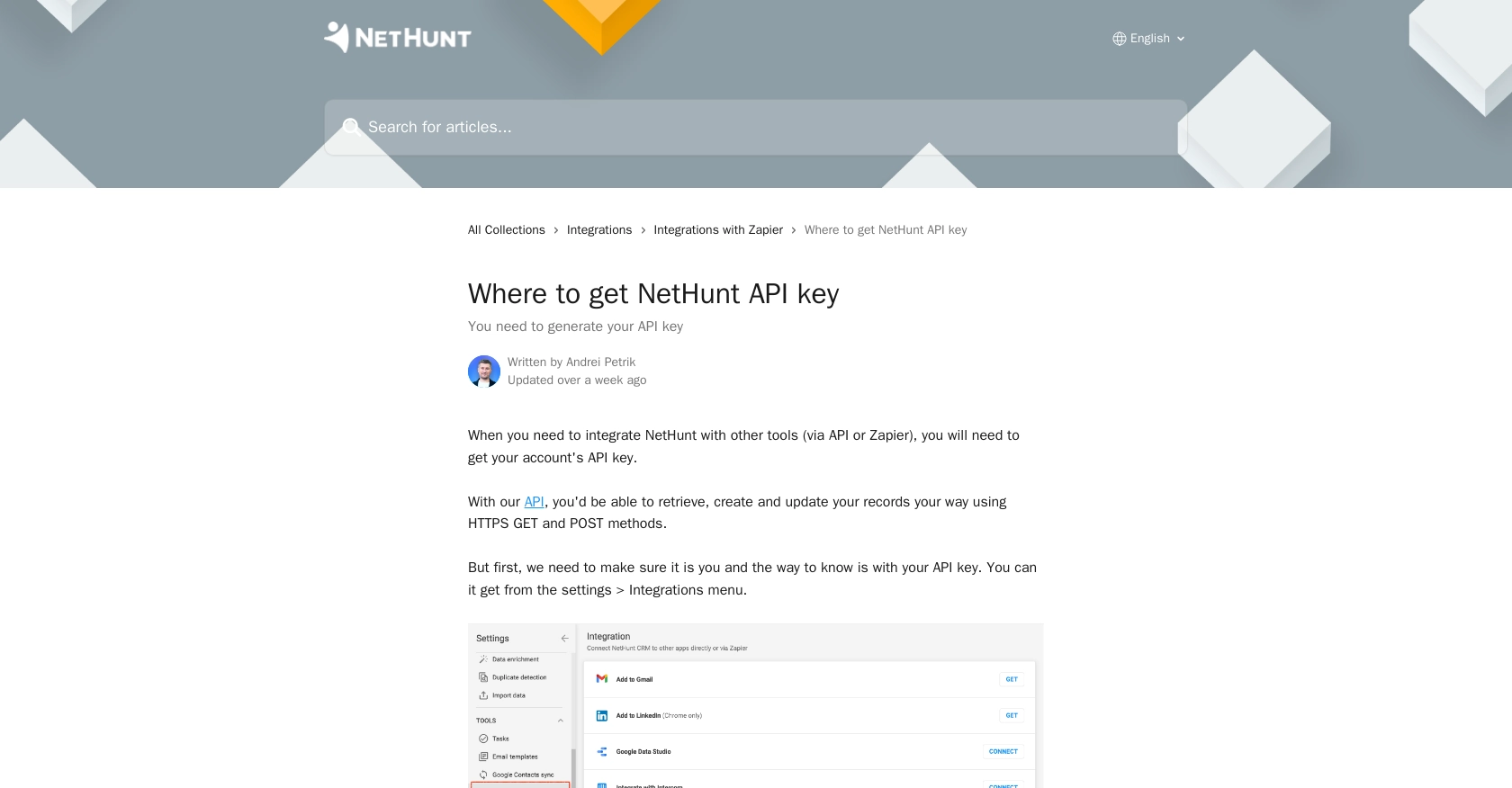Using the NetHunt API to Create Records (with Python examples)

Introduction to NetHunt CRM
NetHunt CRM is a powerful customer relationship management tool that integrates seamlessly with Gmail, providing businesses with an efficient way to manage customer interactions and data. It offers features such as email tracking, sales automation, and pipeline management, making it a popular choice for businesses looking to enhance their CRM capabilities.
Developers may want to integrate with the NetHunt API to automate and streamline various CRM processes. For example, using the NetHunt API, developers can create records programmatically, allowing for the automatic addition of new leads or customer information directly from external sources, thereby enhancing productivity and data accuracy.
Setting Up Your NetHunt CRM Test Account
Before you can start integrating with the NetHunt API, you'll need to set up a test account. This will allow you to safely experiment with API calls without affecting live data. Follow these steps to get started:
Creating a NetHunt CRM Account
If you don't already have a NetHunt CRM account, you can sign up for a free trial on the NetHunt website. This trial will give you access to all the features you need to test the API integration.
- Visit the NetHunt CRM website.
- Click on "Start free trial" and follow the registration process.
- Once registered, log in to your account to access the dashboard.
Generating Your NetHunt API Key
To authenticate your API requests, you'll need to generate an API key. This key will be used to verify your identity when making API calls.
- Navigate to the "Settings" section in your NetHunt CRM dashboard.
- Select "Integrations" from the menu.
- Find the option to generate an API key and click on it.
- Copy the generated API key and store it securely, as you'll need it for authentication.
For more details, refer to the official documentation on where to get your NetHunt API key.
Understanding NetHunt API Authentication
NetHunt uses Basic Authentication for API requests. You'll need to combine your email and API key, then encode them in base64 format. This encoded string will be used in the Authorization header of your API requests.
import base64
# Replace with your email and API key
email = "your_email@example.com"
api_key = "your_api_key"
# Combine and encode
credentials = f"{email}:{api_key}"
encoded_credentials = base64.b64encode(credentials.encode()).decode()
# Use in headers
headers = {
"Authorization": f"Basic {encoded_credentials}",
"Content-Type": "application/json"
}
With your test account and API key ready, you're all set to start making API calls to NetHunt CRM.

sbb-itb-96038d7
Making API Calls to Create Records in NetHunt CRM Using Python
With your NetHunt CRM test account and API key ready, you can now proceed to make API calls to create records. This section will guide you through the process of setting up your Python environment and executing the necessary API requests.
Setting Up Your Python Environment for NetHunt API Integration
Before making API calls, ensure you have Python installed on your machine. This tutorial uses Python 3.11.1. Additionally, you'll need the requests library to handle HTTP requests.
- Install Python 3.11.1 from the official Python website.
- Use pip to install the
requestslibrary by running the following command in your terminal:
pip install requestsCreating a New Record in NetHunt CRM
To create a new record in NetHunt CRM, you'll need to make a POST request to the appropriate API endpoint. Below is a Python example demonstrating how to perform this action.
import requests
import base64
# Replace with your email and API key
email = "your_email@example.com"
api_key = "your_api_key"
# Combine and encode credentials
credentials = f"{email}:{api_key}"
encoded_credentials = base64.b64encode(credentials.encode()).decode()
# Set the API endpoint and headers
url = "https://nethunt.com/api/v1/zapier/actions/create-record/{folderId}"
headers = {
"Authorization": f"Basic {encoded_credentials}",
"Content-Type": "application/json"
}
# Define the record data
record_data = {
"timeZone": "Europe/London",
"fields": {
"Name": "John Doe",
"Birthday": "1980-01-01",
"Employed": True,
"Salary": 100000,
"Primary Email Address": "john.doe@example.com"
}
}
# Make the POST request
response = requests.post(url, json=record_data, headers=headers)
# Check if the request was successful
if response.status_code == 200:
print("Record created successfully:", response.json())
else:
print("Failed to create record:", response.status_code, response.text)
Replace {folderId} with the ID of the folder where you want to create the record. You can find this ID by listing accessible folders via the API.
Verifying Record Creation in NetHunt CRM
After executing the code, check your NetHunt CRM dashboard to verify that the new record has been created. The response from the API call will also include details of the created record, which you can print or log for confirmation.
Handling Errors and Troubleshooting API Requests
If the API call fails, the response will include an error code and message. Common issues may include incorrect authentication details or missing required fields. Ensure your API key is correct and that all necessary data is included in the request.
For more detailed error handling, refer to the NetHunt API documentation.
Best Practices for Using the NetHunt API
When integrating with the NetHunt API, it's crucial to follow best practices to ensure security, efficiency, and reliability. Here are some recommendations:
- Secure Storage of Credentials: Always store your API key and credentials securely. Avoid hardcoding them in your source code. Use environment variables or secure vaults to manage sensitive information.
- Handle Rate Limiting: Be mindful of any rate limits imposed by the API. Implement retry logic with exponential backoff to handle rate limit errors gracefully. For more details, refer to the NetHunt API documentation.
- Data Standardization: Ensure that data fields are standardized and consistent with your application's requirements. This will help maintain data integrity across different systems.
- Error Handling: Implement robust error handling to manage API response errors effectively. Log errors for troubleshooting and provide meaningful feedback to users.
Streamlining Integrations with Endgrate
Building and maintaining multiple integrations can be time-consuming and complex. Endgrate offers a solution by providing a unified API endpoint that connects to various platforms, including NetHunt. This allows developers to focus on core product development while outsourcing integration tasks.
With Endgrate, you can:
- Save time and resources by building once for each use case instead of multiple times for different integrations.
- Provide an intuitive integration experience for your customers.
- Expand your integration capabilities with custom plugins.
Explore how Endgrate can simplify your integration process by visiting Endgrate.
Read More
Ready to get started?

